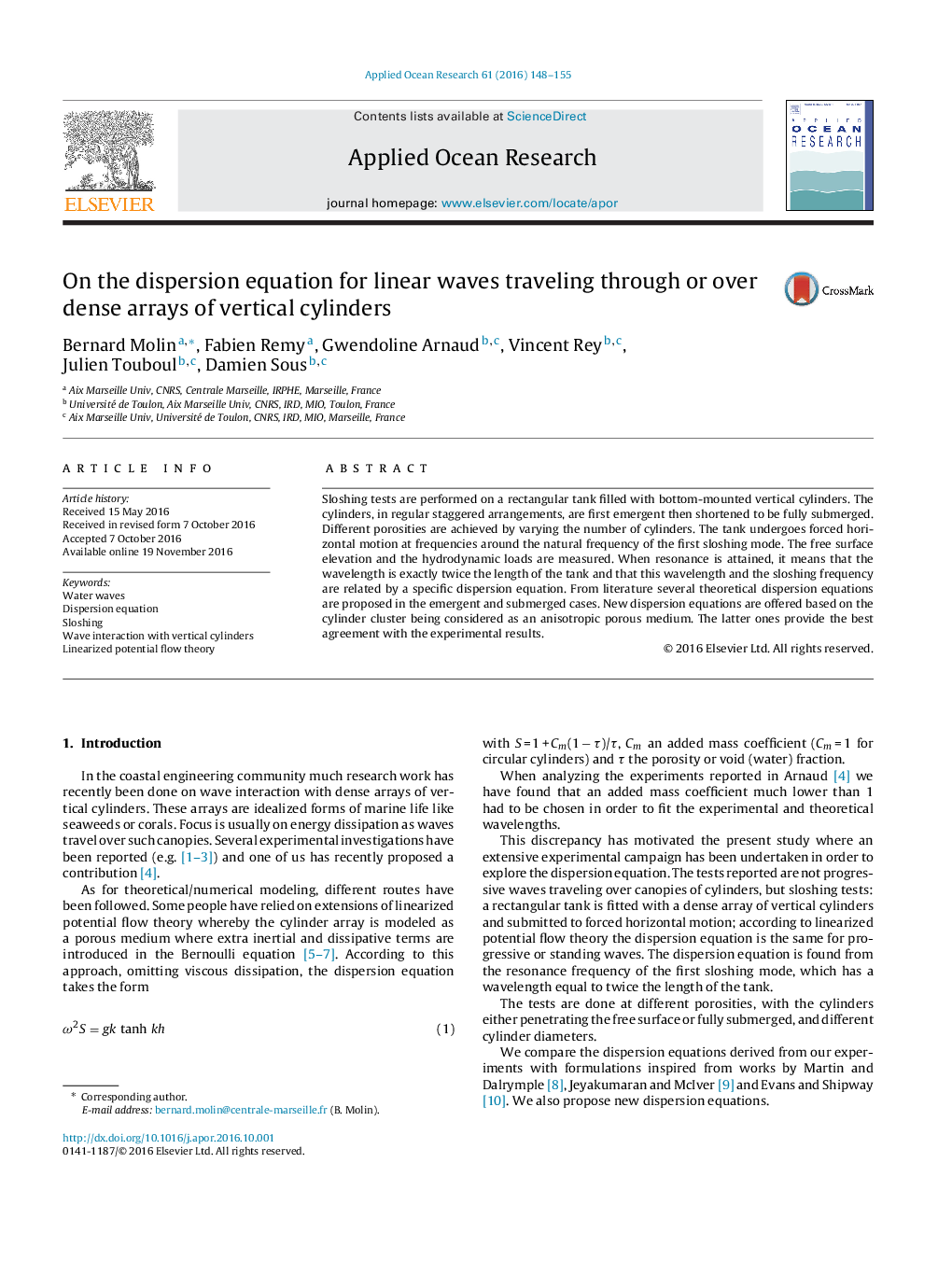| Article ID | Journal | Published Year | Pages | File Type |
|---|---|---|---|---|
| 5473336 | Applied Ocean Research | 2016 | 8 Pages |
Abstract
Sloshing tests are performed on a rectangular tank filled with bottom-mounted vertical cylinders. The cylinders, in regular staggered arrangements, are first emergent then shortened to be fully submerged. Different porosities are achieved by varying the number of cylinders. The tank undergoes forced horizontal motion at frequencies around the natural frequency of the first sloshing mode. The free surface elevation and the hydrodynamic loads are measured. When resonance is attained, it means that the wavelength is exactly twice the length of the tank and that this wavelength and the sloshing frequency are related by a specific dispersion equation. From literature several theoretical dispersion equations are proposed in the emergent and submerged cases. New dispersion equations are offered based on the cylinder cluster being considered as an anisotropic porous medium. The latter ones provide the best agreement with the experimental results.
Related Topics
Physical Sciences and Engineering
Engineering
Ocean Engineering
Authors
Bernard Molin, Fabien Remy, Gwendoline Arnaud, Vincent Rey, Julien Touboul, Damien Sous,
